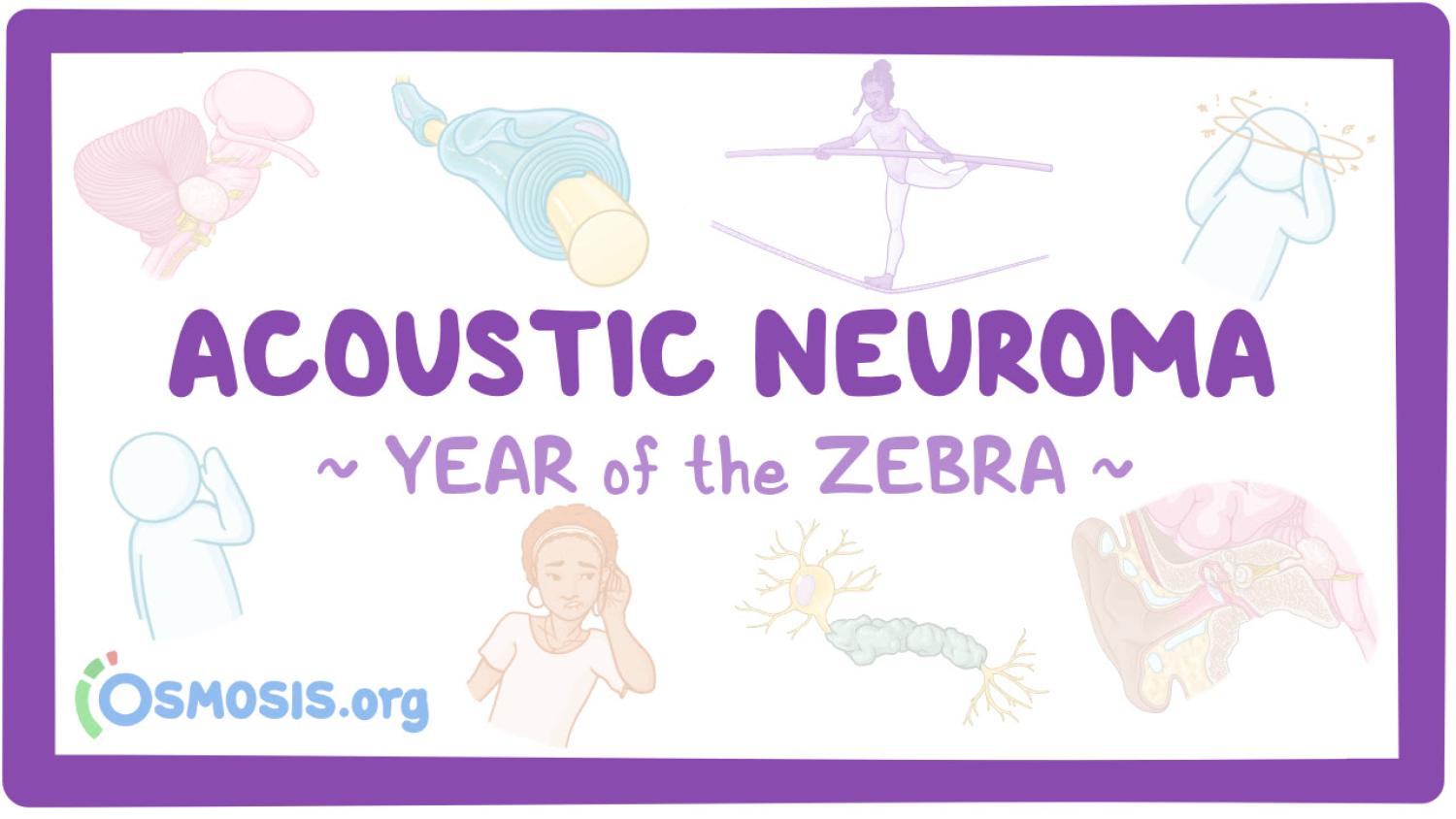
Rare Disease Education: Acoustic Neuroma
Editor: Kelsey LaFayette, DNP, RN, FNP-C
"When you hear hoofbeats, think of horses, not zebras,” is a common saying in medical education that means you should think of common conditions first, instead of rare ones, in making a diagnosis. “Rare” is a relative term though and about 7,000 rare, or "zebra," conditions affect more than 350 million individuals worldwide. Although these conditions collectively affect an enormous number of people, each of these conditions individually is rare enough that it can be difficult to secure the resources to study them and to develop treatments and cures. Likewise, awareness of rare conditions may be low and health care professionals may not be familiar with their signs and symptoms making it more difficult to reach a correct diagnosis and provide effective treatments.
To increase knowledge about rare conditions, Osmosis and the National Organization for Rare Diseases (NORD) have collaborated on an initiative to bring education and awareness to the public. We are excited to be a part of this initiative because we believe everyone deserves quality health care, no matter how rare their condition.
Zebra Highlight: Acoustic Neuroma
Your brain can be compared to a city’s central hub, with nerves acting as highways, carrying information like sound and balance signals from your ears to your brain. If a slow-growing roadblock started on one of these highways, it might not be noticeable at first: a bit of traffic, some minor delays. Yet, over time, the roadblock will be enough to interfere with the transfer of information, even blocking it completely, stopping the flow of information. That is practically what happens in this month’s Zebra, the acoustic neuroma.
An acoustic neuroma is a rare, benign (non-cancerous) tumor that develops on the eighth cranial nerve. This nerve goes from the inner ear to the brain and is responsible for hearing and balance. Signs and symptoms result from the tumor pressing on the nerve, affecting its function. Symptoms typically begin as hearing loss on one side only. Then it can progress to ringing in the ears, dizziness, and/or imbalance. If left unaddressed, the tumor can grow enough to involve other cranial nerves and cause additional symptoms such as facial weakness, facial numbness, and/or swallowing difficulties.
The acoustic neuroma affects women more often than men, usually between the ages of 30 and 60. The incidence is about 1 in 100,000 in the general population.
To learn more about the diagnosis and treatment of the acoustic neuroma, watch the dedicated Osmosis video on YouTube and Osmosis.org.
Meet Shanna Adamic
Shanna Adamic is the Senior Operations Manager at the First Hand Foundation, the nonprofit arm of Cerner Corporation. This video chronicles her personal journey from being symptomatic, to diagnosis and treatment of an acoustic neuroma that was pressing on her brain stem, threatening her life. She tells a story of resilience, hope, and tireless optimism.
Watch her turn her story into actionable impact to improve the lives of others.
Organization Taking Strides
The Acoustic Neuroma Association was founded in 1981 by Virginia Fickel Ehr in Carlisle, Pennsylvania. After her own experience with acoustic neuroma surgery, Ehr realized how difficult it was for patients to find easily understandable medical information and emotional support. Motivated by this gap, she worked with her physician to contact other patients and founded the Acoustic Neuroma Association to provide crucial resources, education, and a sense of community for those affected by acoustic neuromas. The organization has grown rapidly and today serves over 3,000 members, including patients, caregivers, and healthcare professionals across the world in several meaningful ways.
Firstly, the Association offers a variety of educational resources. They have newsletters that provide updates on research, patient stories, and new treatments. They host free, expert-led webinars on topics like treatment advancements, post-surgical care, and coping strategies. They distribute free patient kits to newly diagnosed individuals. These kits contain vital information to help patients navigate their diagnosis and treatment
Moreover, the Acoustic Neuroma Association also has a big focus on community engagement. For instance, they have online forums for vibrant online discussion with thousands of active members, where people can ask questions, share their stories, and find answers in a supportive environment.
Finally, the organization has research partnerships with medical institutions and professionals to promote research that improves treatment outcomes and quality of life for patients. They have also started a research grant program to bring direct support to relevant original research.
To find out more about the Acoustic Neuroma Association and how you can help, please visit their website.
